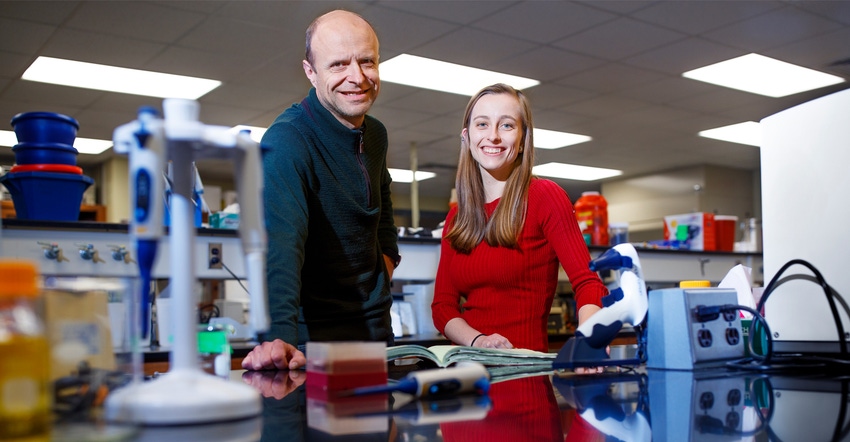December 26, 2018

After eight years of gathering data from more than 1,000 pigs infected with porcine circovirus 2, University of Nebraska-Lincoln researchers have identified the gene associated with pigs' susceptibility to the deadly swine disease.
Based on the research, genetic tests can now be developed to help the swine industry identify pigs more resistant to the virus, say lead researcher Daniel Ciobanu, associate professor of animal science at UNL. Early identification of pigs susceptible to the virus should improve the general health and welfare of swine populations worldwide. This discovery may also have broader implications across species and viral pathogens, according to Ciobanu.
Despite being the smallest virus known to infect mammalian cells, porcine circovirus 2 is one of the most detrimental to the swine industry. The virus is found in all swine populations across the world, costing U.S. swine producers over $250 million annually, mostly in the form of vaccines.
Though the virus is found on all swine farms, only a few pigs show signs of infection. Because no methods are available to differentiate susceptible from tolerant pigs, producers are forced to vaccinate all of their pigs. In addition, by blinding the immune system, the virus also makes swine susceptible to other pathogens, Ciobanu says.
The research team started by monitoring 1,000 infected pigs at UNL's Animal Science Complex. The researchers analyzed pigs both for basic genetic information and indicators of disease, such as the number of viral copies in blood, presence of antibodies and weight loss during infection. Statistical analyses interrogated relationships between DNA markers located across the genome and indicators of disease susceptibility.
Those efforts allowed the researchers to associate PCV2 susceptibility with a specific DNA variant and a gene called Synaptogyrin 2. The discovery also solved a puzzle of swine biology: why certain pigs, but not others, were tolerant to the infectious disease.
"The research integrated the largest data set ever generated to understand the role of host genetics in PCV2-related illnesses," Ciobanu said. "We found that a pig's own genetics can impact the ability of the virus to multiply and cause disease."
Working with Ciobanu were UNL graduate students Lianna Walker, Taylor Engle and Emily Tosky; Thomas Burkey and Hiep Vu from the Department of Animal Science; Stephen Kachman from the Department of Statistics; Dan Nonneman and Timothy Smith from the U.S. Meat Animal Research Center; Tudor Borza from Dalhousie University; and Graham Plastow from the University of Alberta.
The results of the study were recently published in PLOS Genetics.
Source: IANR News
You May Also Like




